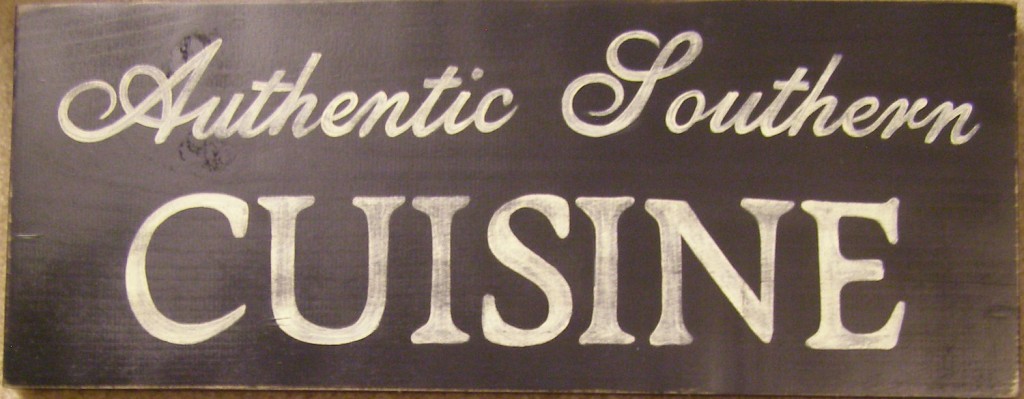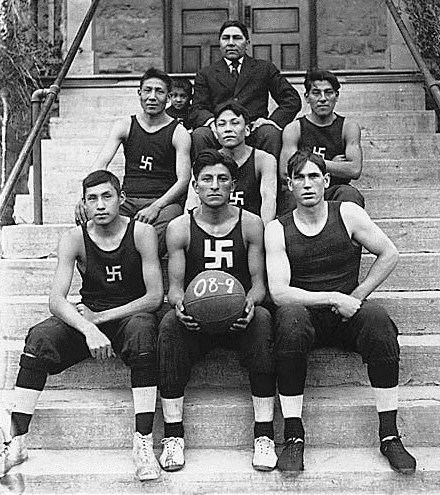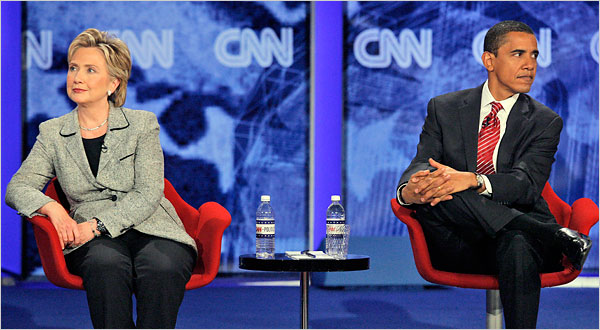 I’ve always been fascinated by those birthday cards that offer a little personalized nostalgia for yesteryear to our elderly loved ones who are able to tell us stories about “back in the day when…” I’m talking specifically about the cards that you typically see in gas stations and Cracker Barrels, the ones that try to give a societal snapshot from the day someone was born. They remind my father (born in 1942), for example, that the hit single on the day of his birth was Bing Crosby’s “White Christmas” (it had recently overtaken “[I’ve Got a Gal in] Kalamazoo”) and that gas back then cost only 19 cents a gallon. For that matter, the 19-cent gas would have fueled a new car that someone could buy for just over a thousand bucks. And so on. Continue reading “The Way We Were…?”
I’ve always been fascinated by those birthday cards that offer a little personalized nostalgia for yesteryear to our elderly loved ones who are able to tell us stories about “back in the day when…” I’m talking specifically about the cards that you typically see in gas stations and Cracker Barrels, the ones that try to give a societal snapshot from the day someone was born. They remind my father (born in 1942), for example, that the hit single on the day of his birth was Bing Crosby’s “White Christmas” (it had recently overtaken “[I’ve Got a Gal in] Kalamazoo”) and that gas back then cost only 19 cents a gallon. For that matter, the 19-cent gas would have fueled a new car that someone could buy for just over a thousand bucks. And so on. Continue reading “The Way We Were…?”
God of the New Slaves
 If you are waiting for Jesus’s second coming, today is the day, in the sonic form of Yeezus – Kanye West’s 6th solo album that has everyone talking, criticizing, buzzing, praising, and worshipping. Like the figure Jesus – and many scholars, I might add – Kanye is a master rhetorician (so don’t worry about his lyrics becoming flesh). He takes words, and twists and bends them into pliable strategies that more often than not work well for his market. He commands power and authority – not by virtue of what he claims, confesses, and professes – but rather, by using the pre-packaged power and authority that society has granted to particular words (and ideas) – like slave and god. Social theorist Bruce Lincoln reminds us that things such as authority are not entities unto themselves. Rather, they are effects that have to be authorized in particular ways across time and space. So what’s all the hype about? Continue reading “God of the New Slaves”
If you are waiting for Jesus’s second coming, today is the day, in the sonic form of Yeezus – Kanye West’s 6th solo album that has everyone talking, criticizing, buzzing, praising, and worshipping. Like the figure Jesus – and many scholars, I might add – Kanye is a master rhetorician (so don’t worry about his lyrics becoming flesh). He takes words, and twists and bends them into pliable strategies that more often than not work well for his market. He commands power and authority – not by virtue of what he claims, confesses, and professes – but rather, by using the pre-packaged power and authority that society has granted to particular words (and ideas) – like slave and god. Social theorist Bruce Lincoln reminds us that things such as authority are not entities unto themselves. Rather, they are effects that have to be authorized in particular ways across time and space. So what’s all the hype about? Continue reading “God of the New Slaves”
But Which is Hip to Drink?
 Have you heard of Nestlé’s new product “Resource”? With bottled water a competitive $11.8 billion international industry in 2012 alone, it makes sense that suppliers will work very hard to dress up their products to give them any advantage in the marketplace. Keeping in mind that they’re selling water, they’re doing this by dressing it down: its simpler, more authentic, and there’s green, yellow and blue on the label. “Resource” is so natural, in fact, that you can see right through it, like there’s nothing there. Maybe that’s because they use 50% less plastic in the bottles. How much purer can it get? Continue reading “But Which is Hip to Drink?”
Have you heard of Nestlé’s new product “Resource”? With bottled water a competitive $11.8 billion international industry in 2012 alone, it makes sense that suppliers will work very hard to dress up their products to give them any advantage in the marketplace. Keeping in mind that they’re selling water, they’re doing this by dressing it down: its simpler, more authentic, and there’s green, yellow and blue on the label. “Resource” is so natural, in fact, that you can see right through it, like there’s nothing there. Maybe that’s because they use 50% less plastic in the bottles. How much purer can it get? Continue reading “But Which is Hip to Drink?”
Patricide and the Nation

Yesterday was Father’s Day in the United States, a manufactured holiday (like any other) that promotes socially-sanctioned sentiments through the mass production of “World’s Greatest Dad” cards and mugs. The day before US Father’s Day, multiple attacks in the Pakistani province of Balochistan included a form of symbolic patricide, as a group fired rockets to destroy a residence where M. A. Jinnah, regarded as the father of Pakistan, had lived in Ziarat, also killing the police officer guarding the site. The other attacks in Balochistan that day reportedly killed dozens, including bombings at a women’s university and a hospital, both in Quetta (a few hours away from Ziarat). While Lashkar-e-Jhangvi, which some people link with al Qaida, claimed responsibility for the hospital and university attacks, the Balochistan Liberation Army (BLA), identified as a separatist group trying to gain the independence of Balochistan from Pakistan, claimed the attack on Jinnah’s residence. Continue reading “Patricide and the Nation”
Regulating Significance
 Perhaps one of the more important articles demonstrating, in a practical situation (the production and sales of so-called Oriental carpets), how discourses on authenticity are ways of managing an otherwise unregulated economy of signification (both meaning and value), is Brian Spooner‘s long but rich essay in Arjun Appadurai’s edited volume, The Social Life of Things: Commodities in Cultural Perspective (Cambridge University Press, 1986: 195-235).
Perhaps one of the more important articles demonstrating, in a practical situation (the production and sales of so-called Oriental carpets), how discourses on authenticity are ways of managing an otherwise unregulated economy of signification (both meaning and value), is Brian Spooner‘s long but rich essay in Arjun Appadurai’s edited volume, The Social Life of Things: Commodities in Cultural Perspective (Cambridge University Press, 1986: 195-235).
They Just Call it “Food”
 In a recent exchange between the spoiled, impetuous young King (who, on this occasion, was angered by a disrespectful comment from his uncle) and his far more seasoned, politically powerful grandfather, in season three of the TV series Game of Thrones, viewers heard the following:
In a recent exchange between the spoiled, impetuous young King (who, on this occasion, was angered by a disrespectful comment from his uncle) and his far more seasoned, politically powerful grandfather, in season three of the TV series Game of Thrones, viewers heard the following:
Joffrey Baratheon: I am the king! I will punish you.
Tywin Lannister: Any man who must say, “I am the king” is no true king.
The rule of thumb that I would propose is that as soon as we switch from just doing something ourselves to talking about doing it–telling someone else how to do it or comparing the various ways in which it is done–then whatever it was that we were doing is no longer what it’s all about. That this applies doubly when it comes to talking about someone else’s doings, no matter how fair and balanced we think we’re being, cannot be overlooked.
After all, here in Alabama people just call it “food” and eat it.
Persons, Displaces, and Things
 In early September 2013 there’s a conference in Liverpool, hosted by the European Association for the Study of Religions (EASR) and the International Association for the History of Religions (IAHR). The description of the event–entitled “Religion, Migration, and Mutation”–starts as follows:
In early September 2013 there’s a conference in Liverpool, hosted by the European Association for the Study of Religions (EASR) and the International Association for the History of Religions (IAHR). The description of the event–entitled “Religion, Migration, and Mutation”–starts as follows:
Changing Symbols and the Swastika

Symbols serve as a significant way to express identity within society. Crosses generally identify someone as a Christian, a hammer and sickle as a communist, and black and white houndstooth as a University of Alabama fan. Of course, that simple equation provides an arena for significant competition about exactly which symbol represents which ideas. The apparent incongruency of Native Americans wearing swastikas on their basketball uniforms (Chilocco Indian Agricultural School in Oklahoma, 1908) derives from the assumption that symbols have a defined meaning. As with identity labels generally, the meanings of symbols like the swastika shift over time, and seldom does a symbol have only one meaning.
Remember the Ala-what-now?

Okay, full disclosure: I had every intention of posting this short note two days ago on June 11 to make sure it went online on the same day as the anniversary it describes. But, maybe it’s fitting that the scheduling was a little off-kilter… Because what’s in a day, anyhow? Continue reading “Remember the Ala-what-now?”
Blurred Boundaries
 In preparation for the first meeting of Culture on the Edge, at the University of Alabama, the group looked at some resources that purport to study identity in a more dynamic, theoretically-engaged way–e.g., works devoted to studies of diaspora, hybridity, syncretism, etc.–in hopes of finding models for how to study the production and movement of identity but without (unintentionally, perhaps) reproducing the very thing one means to study. Continue reading “Blurred Boundaries”
In preparation for the first meeting of Culture on the Edge, at the University of Alabama, the group looked at some resources that purport to study identity in a more dynamic, theoretically-engaged way–e.g., works devoted to studies of diaspora, hybridity, syncretism, etc.–in hopes of finding models for how to study the production and movement of identity but without (unintentionally, perhaps) reproducing the very thing one means to study. Continue reading “Blurred Boundaries”

